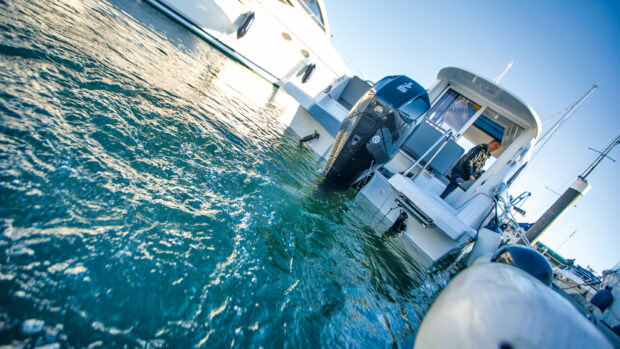Winter can be a great time to go boating. As long as the water doesn’t actually freeze over, this can be one of the best seasons to be afloat.
Those cold crisp days when the water is as clear and still as vodka and free from the usual summer crowds are perfect for boating. However, winter boating does require a little more forethought and planning.
The lack of other people or boats at this time of year means there is less likely to be assistance on hand if you need it. Therefore, some consideration must be given to what is available and whether you are placing them at extra risk from your own lack of preparation.
I recommend using a winter boating checklist to make sure you’ve covered all the usual bases such as daily engine checks, spares, safety equipment, spare kill cord, crew briefing as well as some sensible extra additions to ensure that you have taken every possible step.
Firstly, make sure that others ashore know exactly where you are and when you will be back. Marina staff are a good starting point as they are often glad to have a chat. If your vessel has AIS then having someone ashore who knows about the marine traffic app and website is a good start.
I also use a tracking app called RYA SafeTrx which has largely replaced the old Coastguard CG66. This allows you to upload a destination with an ETA (estimated time of arrival) and tracks your progress via your mobile phone.
Article continues below…

How to winterise a boat: Top tips for putting your boat to bed for the off-season

Toy of the month: The Cruden boat simulator is your winter boating fix
It can even assist with a 999 call, giving your position if all else fails. Once on the boat, check the decks are clear and free of ice. I also make sure I have a flask with a hot drink and lots of extra clothing.
In winter I wear my handheld VHF on my lifejacket as my mobile phone is often buried under several layers and hard to get at. Even going back and forth to your boat, especially alone in the early morning or evening, when the pontoons are icy and dark, can add an element of risk.
The water itself is so cold at this time of year that it literally takes your breath away and falling in becomes a major risk, especially if there’s nobody around to help you get out.
That’s why I always take my lifejacket home with me at this time of year rather than leaving it on the boat so I can put it on the moment I leave my car. What type of boat you have also has an impact on how long you can go out for and how far.
A wheelhouse boat with heating is far more appealing for winter boating than an open RIB in which the wind chill becomes a serious consideration even before you factor in the effect of any spray.
Of course, wearing the right clothing also plays a part in this; good breathable base layers, followed by mid-layers for added warmth and waterproof breathable outer layers can make all the difference.
Good quality neck buffs, hats, gloves and boots are equally important. Given all those extra layers and the weight of them when wet, your lifejacket also needs to be up to the task of keeping them and you afloat.
I use a 190N lifejacket with double crutch straps in winter rather than my usual 160N summer one. And make sure the light works. Lastly, don’t forget to keep tabs on your crew – they may not be enjoying winter boating as much as you, so factor in some early comfort/warming stops or just keep journeys short.
Even if the day has been sunny and windless in the morning, the cold sets in very quickly once the sun starts to drop by mid-afternoon. Make the most of these precious winter boating trips but above all, stay safe.











